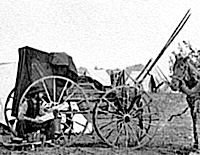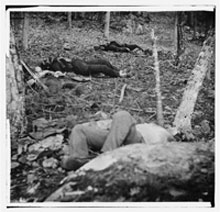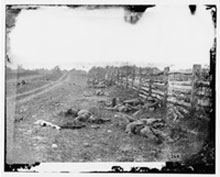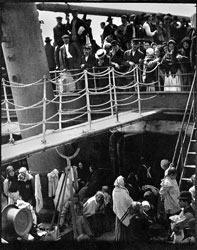|

A
Brief History of Photography
 |
The
first photograph was an image recorded on a pewter plate
by a Frenchman, Joseph Nicéphore Niépce, in
1826. It showed the view from an upper story window in his
home.
Great
strides in photography would not take place until the
next decades, when Louis Daguerre created images
on silver-plated copper, coated with silver iodide, which
developed with mercury. |
In
daguerreotypes, the images seem to float above the highly
polished silver.
At
first, there was no agreement about what to call the new
process. Among the terms bandied about were No daugerreotype,
crystalotype, talbototype, colotype, crastalograph, panotype,
hyalograth, ambrotype, and hyalotype. Ultimately, a new
word won out - photography, which means writing with
light.
Daugerreotypy
was a cumbersome and time consuming process. The biggest
problem was that it was impossible to duplicate daguerreotypes.
But by the end of the 1850s, the daugerreotype had been
replaced by a new method of photography known as the wet
plate process. A British photographer named Frederick S.
Archer discovered that a glass plate coated with a mixture
of silver salts and an emulsion made of collodion could
record an image. The image had to be developed immediately,
before the emulsion dried. But it was now possible for the
first time to make unlimited prints from a negative. It
was also possible for photographers to take pictures outside
of a studio. |
 |
 |
A
key figure in early American photography was Matthew Brady,
who was just 22 years old when he took up photography in
1844. At first, many of his photographs were portraits of
famous Americans, such as Senator Daniel Webster.
These
photographs tended to portray individuals in solemn poses
that reflected the republican emphasis on dignity and
virtue
and made no effort to show the background or setting.
Brady
gained lasting fame for his Civil War photographs,
which have
created lasting images of the conflict in terms of rotting
corpses and raved cities. Yet however lifelike these
pictures
seem, we must realize that they were not accurate depictions
of wartime realities. Photographers like Brady and
Alexander Gardner carefully arranged the scenes, and
even moved corpses to ensure
that they
appeared where
he wanted them.
|
| Senator
Daniel Webster |
During the Civil War period, the process
of taking photographs was complex and time-consuming. Two
photographers would arrive at a location. One would mix
chemicals and pour them on a clean glass plate. After the
chemicals
were given time to evaporate, the glass plate would be
sensitized by being immersed -- in darkness -- in a bath
solution. The
photgrapher would then place the plate in a holder and
insert it in the camera, which had been positioned
and
focused by the
other photographer.
Exposure of the plate and development of the photograph
had to be completed within minutes; then the exposed plate
was
rushed to the darkroom wagon for developing. Each fragile
glass plate had to be treated with great care after development
-- a difficult task on a battlefield. |
 Cold
Harbor, Va.Photographer's
wagon and tent (Between 1860 and 1865) Cold
Harbor, Va.Photographer's
wagon and tent (Between 1860 and 1865)
Library of Congress
|
 |
 |
|
[Gettysburg,
Pa. Four dead soldiers in the woods near Little Round
Top].1863.
Photograph by Alexander Gardner |
[Antietam, Md. Confederate
dead by a fence on the Hagerstown road]. 1862.
Photograph by Alexander Gardner |
[Confederate and Union dead side by side in the trenches
at Fort Mahone]. 1865 |
Selected
Civil War Photographs at the Library of Congress |
In
1885, American inventor George Eastman introduces film made on
a paper base instead of glass, wound in a roll, eliminating the
need for glass plates. Three years later, he introduced the lightweight,
inexpensive Kodak camera, using film wound on rollers. He also
began to develop films in his own processing plants. No longer
did amateur photographers to process their own pictures.
|
|
Some
professional responded to the growth of amateur photography
by attempting to transform the photograph into a work of
art.
One
of the most famous American photographers, Alfred Stieglitz,
experimented with camera angles, close ups,
and focus to created photographs that resemble impressionist
paintings.
Cultural historian Bram Dijkstra wrote that "it
was Stieglitz who... provided the essential example of
the means by which the artist could reach out to a new,
more accurate mode of representing the world of experience." |
 |
“Winter on Fifth Avenue”,
1897, photogravure from Picturesque Bits of New York,
1897. |
|
"The Steerage." 1907.
Photograph by Alfred Stieglitz. |
|
